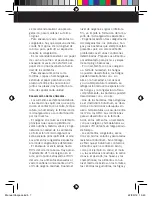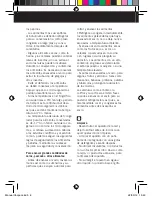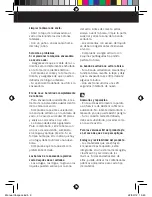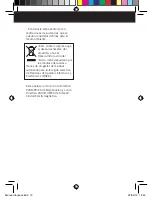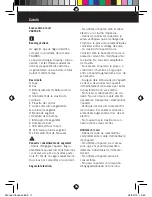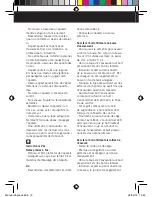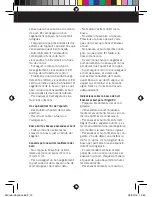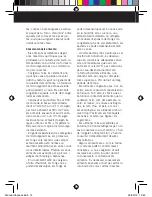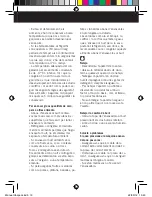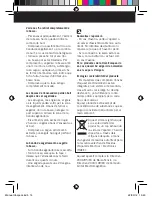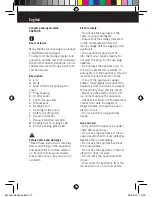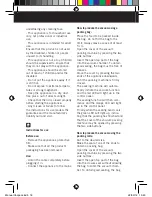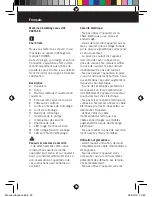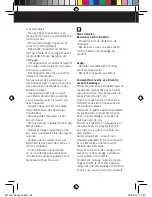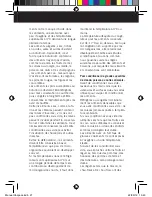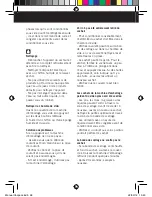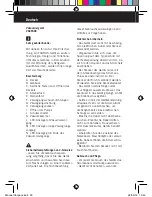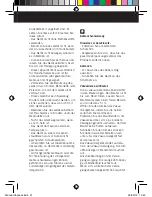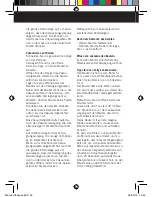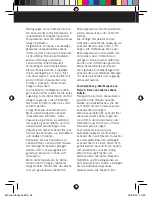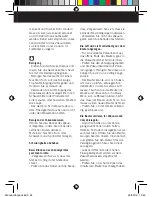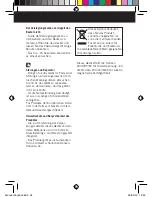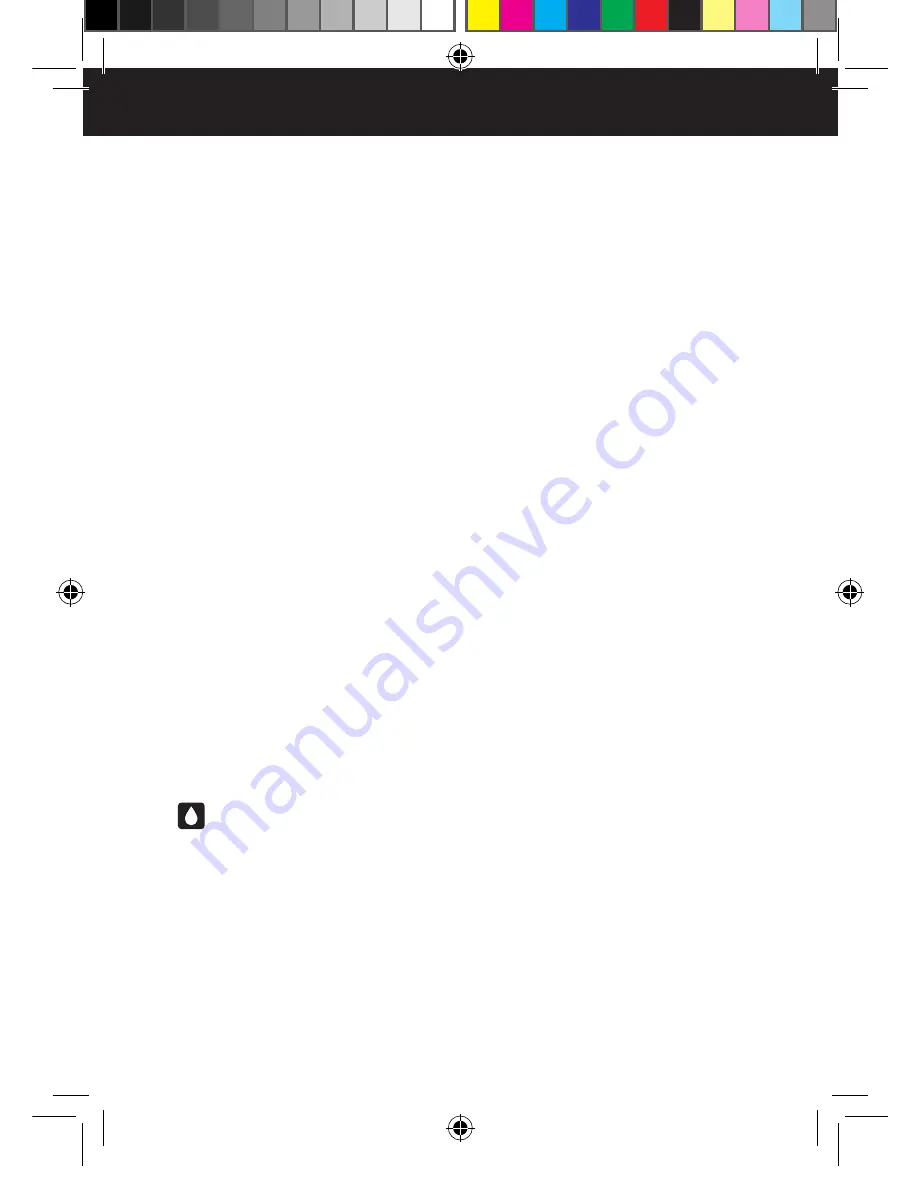
food and drinks, in order to improve
their safety and preservation.
To pack large quantities of meat, fish or
other foods:
Before vacuum packing, wash your
hands, the utensils and the surfaces
to be used for cutting and packaging
the food.
Immediately refrigerate or freeze pe-
rishable foods that you have vacuum
packed. Never leave them exposed to
the ambient temperature.
Vacuum packing dried foods such as
nuts, coconut or preserved cereals
in the kitchen or dark places will
prolong their duration. Foods with
a high fat content will deteriorate if
they are exposed to oxygen or a high
temperature.
Peeling some fruit and vegetables
such as apples, bananas, plantains
and tubers before vacuum packing
will prolong their duration.
Vegetables such as broccoli,
cauliflower and fresh cabbage emit
gases when vacuum packed for later
refrigeration. Therefore it is advisable
to cook and freeze these foods before
vacuum packing.
Cleaning
Disconnect the appliance from the
mains and let it cool before underta-
king any cleaning task.
- Clean the equipment with a damp
cloth with a few drops of washing-up
liquid and then dry.
- Do not use solvents, or products
with an acid or base pH such as blea-
ch, or abrasive products, for cleaning
the appliance.
- Do not submerge the appliance in
water or any other liquid, or place it
under a running tap.
Cleaning the vacuum chamber:
Open the cover of the vacuum
packing machine by pressing the two
side buttons.
With a cloth or damped sponge and
soap.
Troubleshooting
If nothing happens on pressurising the
packing machine:
- Make sure the electrical cord is
properly plugged into the mains.
- Check the cord and the mains
socket and make sure these are not
damaged in any way.
- If you find any damage do not use
the packing machine.
The air has not been completely expe-
lled from the bag:
- For correct packing the end of the
bag must remain inside the vacuum
chamber.
- Check for possible dirt on the sea-
ling band or in the vacuum chamber.
If there is any dirt, clean them and
reposition them in their locations.
- The bag may be punctured. To
check this, seal the bag with a little
air inside, submerge it in water and
apply pressure. If bubbles form,
this means that there is a leak. Use
another bag.
- Check that the cover is completely
closed.
Manual Vacpack.indb 21
22/03/12 15:45

